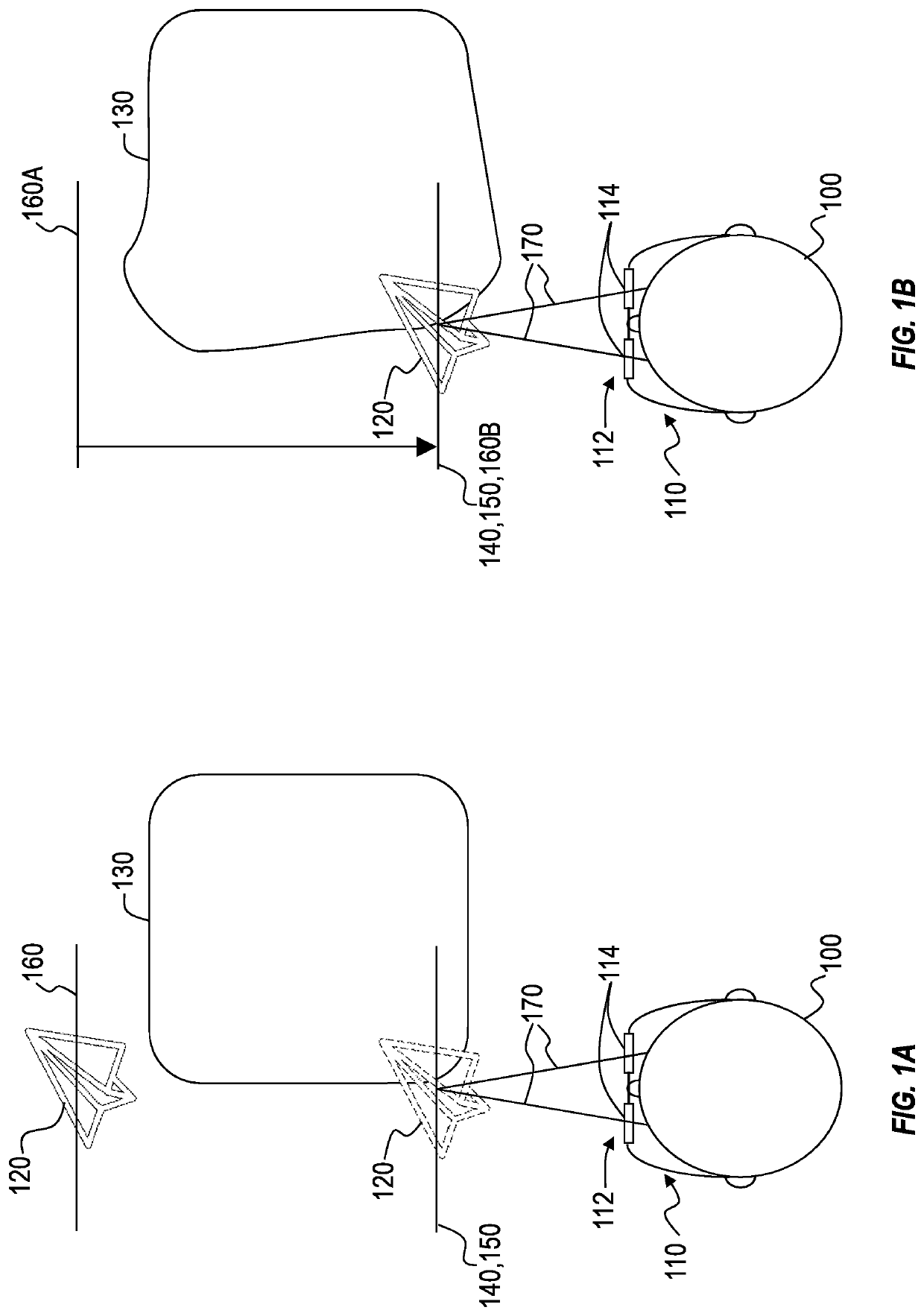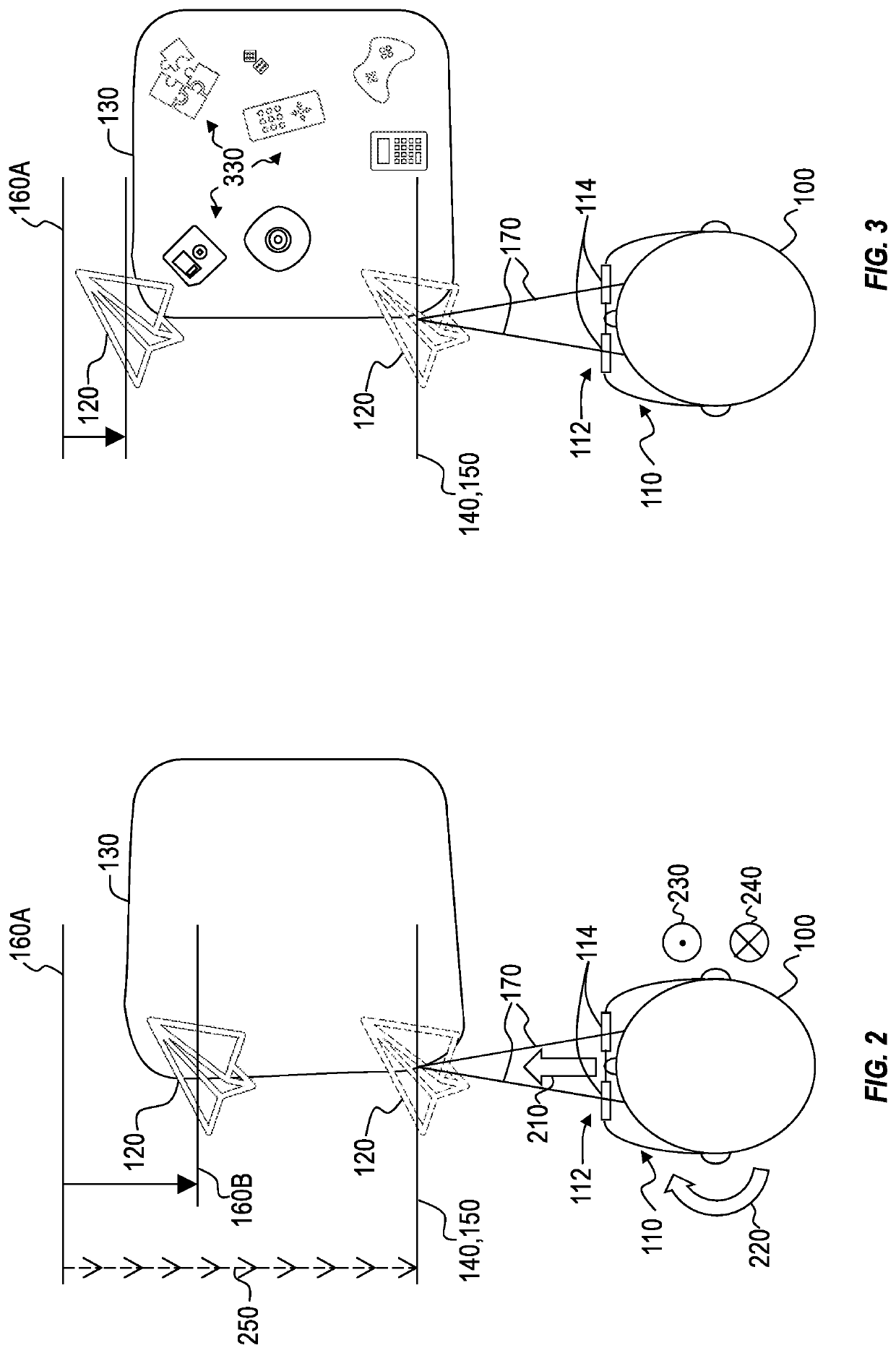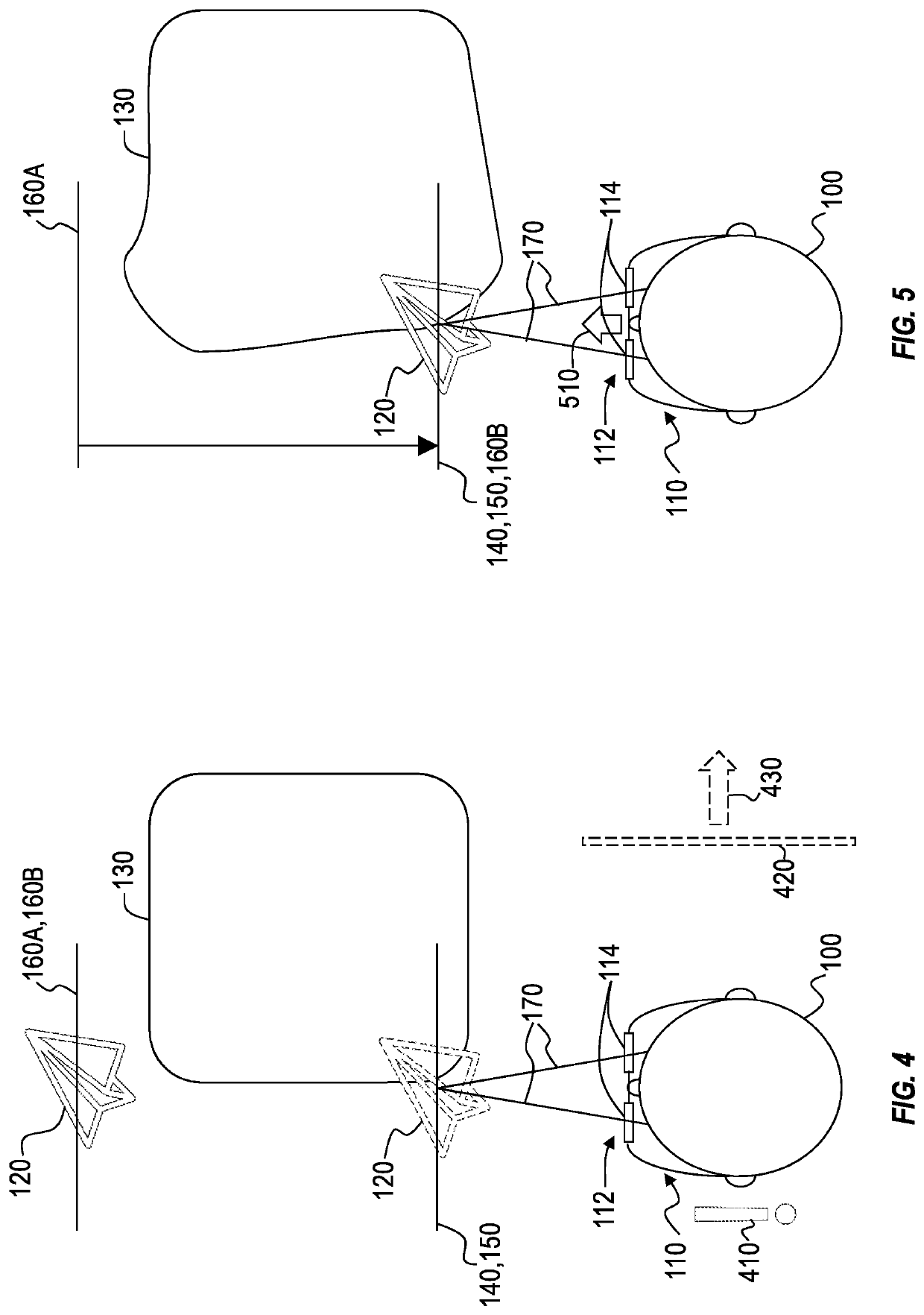Automated variable-focus lens control to reduce user discomfort in a head-mounted display
a variable-focus lens and control technology, applied in the direction of instruments, optical elements, mechanical pattern conversion, etc., can solve the problems of user discomfort in a mixed-reality environment, many challenges, difficulties, costs, etc., and achieve the effect of reducing user discomfor
- Summary
- Abstract
- Description
- Claims
- Application Information
AI Technical Summary
Benefits of technology
Problems solved by technology
Method used
Image
Examples
Embodiment Construction
[0024]Because many mixed-reality systems are designed with optical systems that focus virtual content (e.g., holograms) at a particular fixed distance, many mixed-reality systems cause vergence-accommodation conflict, which occurs when a person's eyes are positioned to view an object at a particular vergence depth while the person's eyes are focused at a depth that differs from the vergence depth. For example, a person's eyes may become positioned to view a hologram of a hand-held object (e.g., a piece of jewelry) at a vergence depth that is closer to the user than a predefined focus distance of a mixed-reality system.
[0025]A solution to vergence-accommodation conflict may include implementing one or more variable-focus lenses into the optical systems of mixed-reality systems to cause the focus distance of virtual content to conform with the vergence depth of presented virtual content. However, variable-focus lenses may cause distortions to real-world and / or virtual objects in visua...
PUM
 Login to View More
Login to View More Abstract
Description
Claims
Application Information
 Login to View More
Login to View More - R&D
- Intellectual Property
- Life Sciences
- Materials
- Tech Scout
- Unparalleled Data Quality
- Higher Quality Content
- 60% Fewer Hallucinations
Browse by: Latest US Patents, China's latest patents, Technical Efficacy Thesaurus, Application Domain, Technology Topic, Popular Technical Reports.
© 2025 PatSnap. All rights reserved.Legal|Privacy policy|Modern Slavery Act Transparency Statement|Sitemap|About US| Contact US: help@patsnap.com



